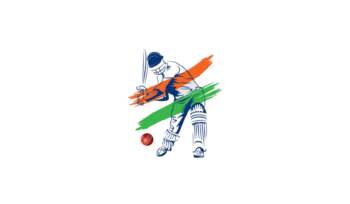Sports betting odds are one of the most confusing aspects of sports. A typical game can have several different outcomes, and your odds will vary accordingly. But does this have to be that way? Not necessarily. Knowing how to decipher odds can help you make more informed betting decisions – whether it’s for fun or profit.
What are Betting Odds?
Betting odds are a way to compare the likelihood of different outcomes in a sporting event. They are a relative measure of how likely it is for one team to beat another. This allows gamblers to decide which teams they think will win and then place their bets accordingly.
Unlike other types of gambling, where you can bet on your team with no regard for their opponents, sports betting involves betting on both sides at once. In other words, you have to consider the probability that both teams will win or lose based on their previous performance and overall strength relative to each other. This is why sports betting odds are so important; they indicate how well-matched two teams might be.
What is Probability?
Probability is the likelihood that any particular outcome will occur. Probability quantifies how often an occurrence is. If the oddsmaker favors a certain conclusion, that outcome has a good chance of happening. An unlikely occurrence has a low likelihood of really occurring.
The probability of an event can be expressed as a percent or decimal fraction. For example, if you were betting $1 on the outcome of a coin flip and won $0.10, you would have an 80% chance of winning your next flip. This means there’s only a 20% chance you will not win your next flip.
Calculating Probability from Betting Odds
The easiest way to calculate the probability of an outcome is to multiply each possible outcome by the probabilities of that outcome. For example, the probability of a team winning a game is 1/2. The probability of a team winning two games in a row is 2/4, and so on. To get the probability of getting X number of points, you add up all the individual probabilities for each point.
How to Read Betting Odds
Learning how odds work can help you decide whether or not to take a risk on a wager. It will be difficult for you to make any money betting on sports if you can’t read them. The odds are presented in several ways, all of which are straightforward.
When you look at the odds, you’ll see the number of ways that you can determine a winning outcome. For example, in a game of craps, there are two possible outcomes: the shooter rolls a 4 and either rolls snake-eyes (0) or busts (11).
The odds for each action result are 5:4 for rolling snake eyes and 5:3 for rolling bust. As you can see, there are five possible ways to get either result. There are also four other ways to roll a 7 (two 2-7’s, two 3-7’s, and one 4-7), but these are irrelevant because they keep the odds of getting any other result.
Knowing all those numbers is key when it comes to betting on sports. You can use them to calculate how likely your favorite team will win, which players will score more points, or whether your favorite player will hit a home run.
Comparing Sports Betting Odds
When you’re looking to wager on a game, it’s important to know the odds of each possible outcome. Sports betting odds are different from regular betting odds because they show how much money you can win if you bet on one team or player.
There are a lot of different sports and betting options available to you. But how do you know which one is best for you?
Point Spreads
The point spread is a number that shows how many points a team needs to win or lose to cover the spread. The oddsmaker sets the point spread which usually ranges from -1 (the favorite) to 9 (the underdog). When you bet on a game, you’re hoping that your team will win by more than the point spread.
MoneyLine
The money line is an aggregate of the two teams’ point spreads. If a team has a 2-point line and they win by 2 points, then they would be considered an underdog in terms of the money line because they lost by 1 point on the field. On the other hand, if they win by 4 points, it would be considered a favorite in terms of their money line because they won by 4 points on the field. This is why we call it the “money” line; you’re betting on how many points each team wins on average throughout the season.
Over/Under Bets
The over or under bet is the most common type of bet available at online sportsbooks. This type of bet works like the money line, except it has a range instead of just two teams. For example: If you wager $100 on a game with an over/under a total score of 124 points, and your team wins by 12 points or less (123), then you win $12 for every dollar wagered. If your team loses by 12 points or less (123), then each dollar wagered will pay out $0.

What Are American, Decimal, & Fractional Odds?
When you’re betting on a football game or any other event, odds are the key to understanding your actions. Odds are all about how likely something is to happen.
Odds are simply the ratio of winning chances. For instance, if the odds are 1:2, there’s an even chance that your team will win. You can also think of them as a percentage — for example, if the probability of an event happening is 50%, then there’s a 50% chance that it will happen.
American Odds
American odds are the standard decimal odds and are used by most sportsbooks to display their betting lines. The American odds format consists of one decimal place, which means that each team has a 50/50 chance of winning its game.
To calculate the decimal odds, you need to know how much money you would have wagered on each team. The best way to do this is by multiplying the total amount of money wagered by 0.5 (or 1/2). This will give you fractional odds and ensure you always bet on the favorite in any situation where multiple teams compete for a prize.
Decimal Odds
Decimal odds are another way to express the probabilities of various outcomes, like a decimal point on the percentage scale. The numbers after the decimal point represent the probability that an event will occur.
For example, if you have odds of 1.00 for a team winning, and the team has a 60% chance of winning, then your odds are written as 1.00/1.60 (or 1/2). This means there’s a 40% chance that your team will win, and there’s still a 20% chance that they won’t win.
Fractional Odds
Fractional odds are the most common type of sports bet, and they are simply the same as decimal odds except that you don’t have to pick your number in whole numbers.
For example, if you see a game with a +120 point spread, you know that if you win the game outright, you will get $120 for your bet. However, if you win by one point or less (a fraction), you will get only $120 for that bet.
In some cases, you may also be able to choose between different odds levels for your bet. For example, if there is a -110 point spread, there are two options: A win by more than 1 (1.1) points or a win by less than 1 (0.9). You can choose which one suits your betting strategy best!

Using Odds to Get a Break-Even Percentage
No matter how the odds are presented, you need to be able to convert them into a break-even percentage to determine whether you are making a decent bet. If the book offers you +200 odds, they think you have a one-in-three chance of winning the wager. If the chances are better than that, you’re probably right. This is analogous to the pot odds in a game of poker.
When you’re making bets with sportsbooks, it’s important to understand what they mean by “break-even point.” It’s not so much a mathematical concept as it is an idea that hinges on how different sportsbooks set their odds. For example, in some books, you might see odds like +160 or +160/1 for your biased selection, while in others those same numbers might be +100 or +110.
The latter example means that there are one in ten chances of either team winning, but if you bet $100 on each side, then you’ll win $10 if one team wins and lose $10 if both teams win. In this case, the book has set the odds so that there’s no advantage in betting on one side over the other — which means that there’s no reason to ever bet at all!
Conclusion
Understanding the odds for sports betting is an essential step to building a winning streak in your betting bankroll. One of the main obstacles that an inexperienced bettor faces are a lack of knowledge on how to interpret and decipher sports betting odds. This guide is designed to be accessible to the layman and aims to explain the terminology used in betting. It does not intend to be an exhaustive guide; simply a brief explanation of what a bettor needs to know for making bets that have any value.











Your review has been sent for moderation